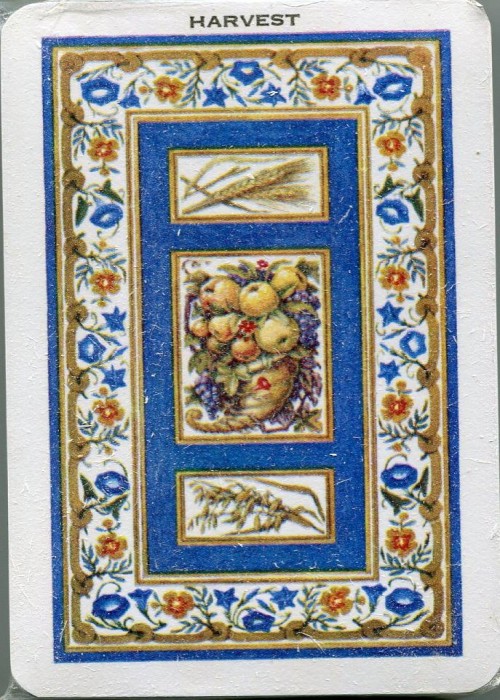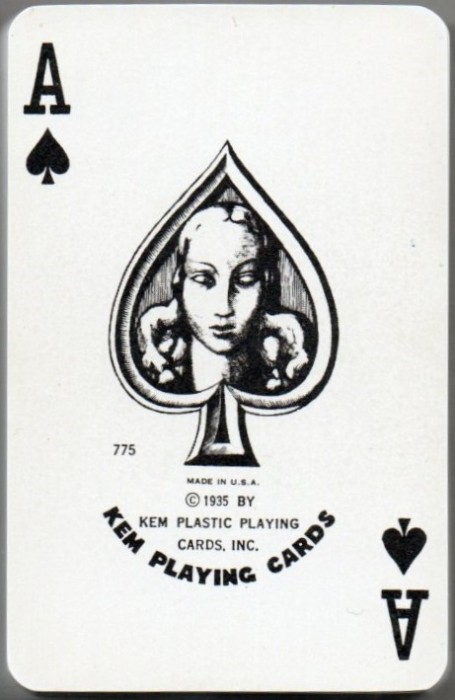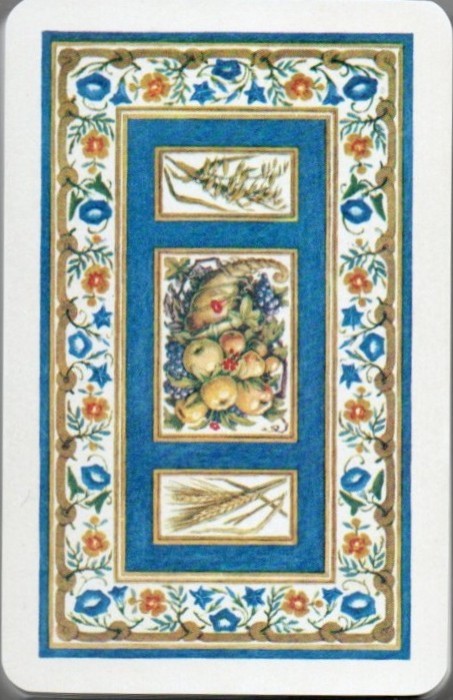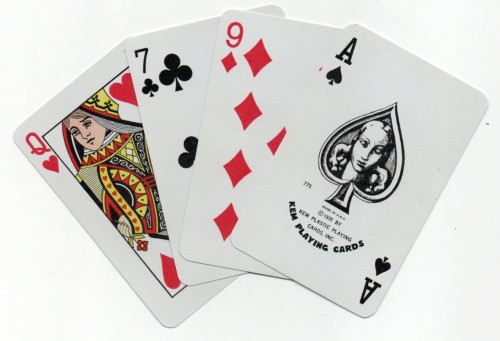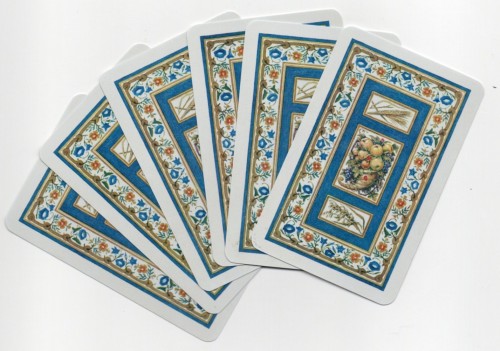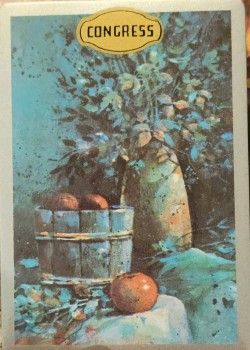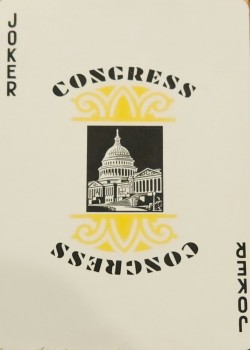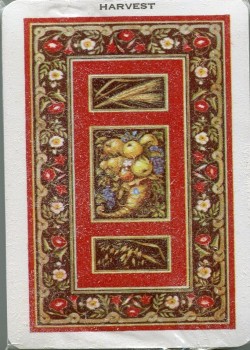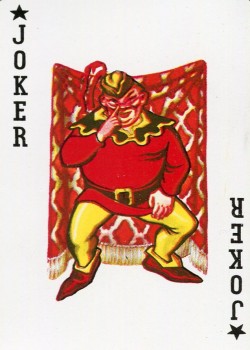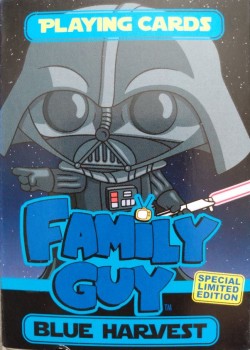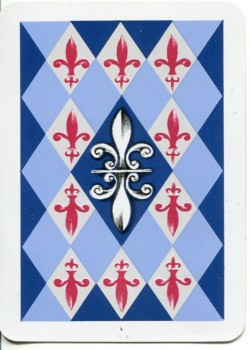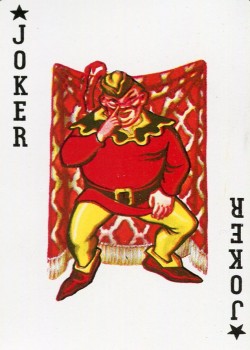ABOUT THIS DECK
KEM cards were first manufactured in 1935. Unlike normal playing cards which are made from plastic-coated paper, KEM cards are made entirely from cellulose acetate and are waterproof. USPC purchased KEM Cards in 2004.[17][18] After a two-year hiatus, USPC restarted KEM card production, which continues today. KEM cards are available to the consumer (usually at specialty game shops) with various back colors and designs in both poker and bridge sizes. In 2007, KEM bridge cards (using Bicycle artwork) were adopted as the official cards of the World Series of Poker.
KEM playing cards were manufactured in Poughkeepsie
Starting with backroom card games in smoky bars and elevating to center stage as the official cards of the World Series of Poker, KEM playing cards were manufactured in Poughkeepsie for nearly six decades. Beginning production in New York City in the early 1930s, they continue to be the preferred card of casinos worldwide.
KEM Cards developed a unique manufacturing process that differed from other playing cards made in the industry. By mass-producing decks of playing cards that consisted of cellulose acetate, its cards were bendable, washable and retained their original shape long after standard paper-based cards needed to be replaced.
In 1946, KEM Cards purchased the 27-acre John Flack Winslow property — now the northern section of the Marist College campus — that was a private estate from 1867 through 1926. Deciding not to build a plant on the property, KEM sold the former estate to local contractor Vincent Costanzi in 1948 and acquired a building from Western Publishing that sat at 2 Beck Place, just behind the Steel Plant Studio on the east side of Route 9.
Ironically, during the 1920s, Western Publishing established a division called the Western Playing Card Company, quite possibly staging that operation in the structure that KEM purchased. The building was originally constructed by the Permalife Battery Company around the same time the Fiat Motor Company occupied a plant site just north (where Western Publishing was subsequently based and Home Depot now operates).
Permalife patented a method of connecting electrodes to a storage battery, keeping the battery sealed.
A controversy arose when it was discovered that the eastern portion of the building KEM purchased encroached on 3 feet of land that belonged to a railroad company. A railroad line passed through the location in 1868 and still owned the property. The problem was resolved when the railroad agreed to charge KEM $10 annually for use of that land.
KEM cards bear a unique red and blue arrow design on its back, which is widely considered the most recognizable card design worldwide. They became a favorite of American troops during World War ll due to their durability and ability to withstand oppressive heat. Magicians also prefer using KEM cards in their act because of their increased flexibility.
The company also manufactured “Braille marked decks” for visually impaired and blind customers. Those types of cards were invented in 1829 by French musician and educator Louis Braille, who lost his sight at 3 years old.
Many local residents gained employment at the KEM plant through the years and it typically staffed about 20 to 30 full-time and seasonal workers, the youngest at 14 years old. The youngsters’ age limit was set in compliance with federal child labor laws.
In 2004, KEM Cards’ copyrighted designs were sold to the United States Playing Card Company and the Poughkeepsie plant shut down. The company designs were reacquired and manufacturing continues in Mattituck, Long Island.
“Marist eventually purchased the building and considered building and renovating there, but the roof had collapsed and it was in bad shape,” said Marist archivist John Ansley. “Instead they just took the building down.”
Another possible reason for that decision could be the fact that both Permalife and KEM used strong chemicals as part of their respective operations, which would’ve required the college to incur a substantial expense cleaning potential contamination before erecting another structure there.
“While there isn’t much information on file for KEM Cards, the company is listed every year from when they purchased the building through 2005,” said Kira Thompson, head of the local history room at Adriance Memorial Library.
Since the business was sold in 2004 and the directories are printed in advance of the year published, it is likely that the 2005 listing was already outdated. The site of the KEM building is now a parking lot for the Marist College Art Gallery.
COMPANY:KEM Playing Cards
EDITION:N/A
COLLECTIONBridge
RELEASE YEAR:N/A
CARD STOCK:N/A
FINISH:plastic
COURT ILLUSTRATION:N/A
STYLE:N/A
